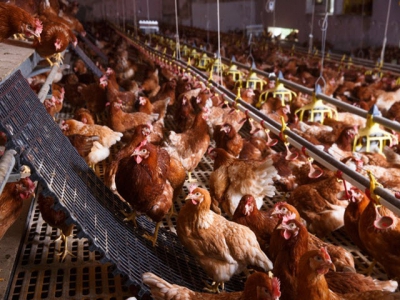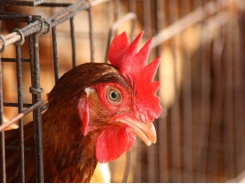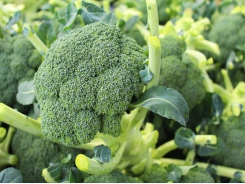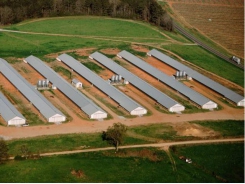The impact of vitamins on layers facing heat stress

Adding vitamins A and E to the diets of laying hens exposed to high temperatures can support egg production, bird health and feed conversion, say researchers.
An international team of researchers from the US, Pakistan, China and Egypt explored the use of vitamins A and E to alter bird health along with egg production and quality when fed to birds facing heat stress.
“The objective of the present study was to evaluate dietary supplemental levels of vitamins A and E, fed separately or combined of laying hen diets on productive performance traits, egg quality traits, and blood hematology and chemistry during hot summer seasons,” the researchers said.
The research team members found that the feed additives improved the feed conversion ratio (FCR). However, egg quality was not altered, although some elements within bird blood were changed by the inclusion of the fed vitamins.
“It could be concluded that the layer diets supplemented, individually or combined, with vitamins A and E had good results in alleviating the harmful impacts of summer ambient temperature on different aspects of health indices and productive performance,” they said. “Our results confirm the efficiency of vitamin A in enhancing the productive performance traits.”
“The combination of vitamins A and E (16,000 IU vitamin A plus 500 mg vitamin E per kilogram diet) is preferable for obtaining better production of laying hens reared under hot summer conditions,” they added.
Concerns from heat stress
Negative environmental factors, like heat stress, may alter laying hen productivity, the researchers said. When temperatures exceed a set range, decreases in production and poor layer behavior are expected.
“Increasing the nutrients density such as limiting amino acids and vitamins is very important to alleviate the deleterious effects of high ambient temperature on feed consumption and metabolic requirements,” they said.
Heat stress also may increase excretion or loss of minerals and vitamins, they said. An additional amount of select vitamins or minerals may be needed to “avoid marginal deficiency” when birds experience high temperatures.
Why vitamins A and E?
Vitamin A reduces lipid peroxidation and acts as an antioxidant during heat stress challenges, the researchers said. It is needed for growth, reproductive physiology and visual development.
Increasing the amount added to layer feeds may support normal development of layer reproductive organs and membrane integrity when birds are raised in challenging environmental conditions, they said.
“Many researchers confirmed that vitamin A can improve the productive performance traits and egg quality characteristics in laying hens reared under heat stress,” they added.
Vitamin E also is known to be an antioxidant and may provide benefits to a laying hen during heat stress conditions, they said. Previous research showed that some laying hens eating 40 IU/kg of supplemental vitamin E had better egg yield.
The vitamin also improves the uptake and use of vitamin A, while protecting the other vitamin from oxidative breakdown, they said.
“The data concerning the use of fat-soluble vitamins, especially vitamin A under heat stress conditions on thyroid hormones of laying hens are scanty and the previous reports on the supplementation of these vitamins in layer diets resulted in contradictory conclusions,” the researchers said.
Feeding trial details
During the feeding trials, 135 laying hens received one of nine diets for a period of 12 weeks days and faced temperatures ranging from 31.5c to 30.69c, the researchers said. Vitamins used to generate the trial feeds were commercially available.
A basal diet was designed to have 17.5% crude protein (CP), 2,800 kcal ME/kg and supplemented with vitamin A at 0, 8,000 or 16,000 IU/kg, they said. “Under each level of vitamin A, the diets were supplemented with dl-α-tocopherol acetate (the purity was 50%) at 0, 250 and 500 mg vitamin E/kg diet,” they added.
Bird feed intake was noted weekly, egg weight and number were recorded daily and the FCR, egg production and egg output volume were calculated, they said. A selection of eggs also was checked monthly for exterior and interior quality including shape, shell thickness, Haugh unit, percentage of yolk, albumen and shell.
Blood samples also were gathered from select birds, they said. Blood was checked for white blood cell count (WBC), packed cell volume (PCV), blood hemoglobin (HB) and the “percentages of heterophils, lymphocytes, monocytes, basophils and eosinophils were calculated.”
Serum was analyzed for several metabolites including “triiodothyronine (T3), thyroxine (T4), aspartate transferase (AST), alanine transferase (ALT), total protein, albumin, total lipids, total cholesterol and calcium,” they added.
Results
Adding vitamin A to bird diets improved feed intake at 8,000 IU, but decreased it at higher inclusion levels, the researchers said. However, FRC improvement was noted for all vitamin A-supplemented feeds.
There also was a “noticeable increase” in egg output and production for birds receiving vitamin A supplemented feeds when compared to control group birds, they said. “Improving egg production and egg output due to vitamin A addition (8,000 and 16,000 IU/kg diet) may be attributed to improved FI and FCR under the hot summer condition,” they added.
As more vitamin E was included in bird diets feed intake fell, however, FCR improved as more of the supplement was added, they said.
“Improving FCR as a result to vitamin E supplementation may be explained by the antioxidant properties of vitamin E, which improves feed utilization and metabolism as well as protecting the liver and other organs from oxidative damage induced by a heat burden,” they added.
“Birds fed the diet free of the 2 vitamins (0 vitamin A × 0 vitamin E) consumed more feed (126.1 g/d) than other experimental groups, and had the worst FCR (2.67),” the researchers said. “Hens fed diets supplemented with 16,000 IU vitamin A plus 500 mg vitamin E/kg diet had the best FCR when compared with other treatment groups.”
Vitamin A decreased egg shape on the value index and vitamin E was linked to a decline in eggshell thickness, they said. “Yolk and shell percentages, shell thickness, and Haugh unit score increased as a result of supplemental vitamin A,” they added.
During the period of highest temperature, no influence from supplemental vitamin A was noted in blood hematological parameters other than the decline in PCV values, they said. T4 and ALT activity also declined, while serum AST increased as more vitamin A entered the diet.
The supplement lowered serum concentration of albumin, total cholesterol and total lipids while increasing levels of globulin and calcium, they said.
Vitamin E supplementation boosted amounts of monocytes and reduced levels of basophils, they said. In serum, it positively influenced total protein, total cholesterol and total lipids but did not significantly alter other blood metabolites.
“The combination between 0 IU vitamin A and 500 mg vitamin E/kg diet had the highest value of PCV and Hb comparing with other groups,” the researchers said. “The highest count of lymphocytes was observed in blood of hens fed diets enriched with 8,000 IU vitamin A plus 250 mg vitamin E/kg diet.”
“The interaction of 8,000 IU/kg vitamin A and 0 mg/kg vitamin E had the highest count of monocytes compared with other treatment groups,” they added. “Hens fed diets supplemented with 16,000 IU vitamin A combined with 250 mg vitamin E/kg increased the count of eosinophil cells in its blood than those fed other diets.”
The positive influence found when both vitamins were added to birds’ diets may be linked to a synergistic effect between two fat-soluble vitamins that both have a role in boosting immune function, they said.
“It can be concluded that layer diets supplemented with vitamins A and E had good results in alleviating the harmful impacts of high ambient temperature,” the researchers said. “The combination of 16,000 IU vitamin A and 500 mg vitamin E per kilogram diet is preferable for obtaining better production of laying hens reared under hot summer conditions.”
Source: Animal Nutrition
Authors: M. E.Abd El-Hack, M. Alagawany, K. Mahrose, M. Arif, M. Saeed, M. Arain, R. Soomro, F. Siyal, S. Fazlani, J. Fowler
Related news
Tools

Phối trộn thức ăn chăn nuôi

Pha dung dịch thủy canh

Định mức cho tôm ăn

Phối trộn phân bón NPK

Xác định tỷ lệ tôm sống

Chuyển đổi đơn vị phân bón

Xác định công suất sục khí

Chuyển đổi đơn vị tôm

Tính diện tích nhà kính

Tính thể tích ao




 Roosters play role in chick development
Roosters play role in chick development  Poultry research farm expansion increases availability, capacity
Poultry research farm expansion increases availability, capacity